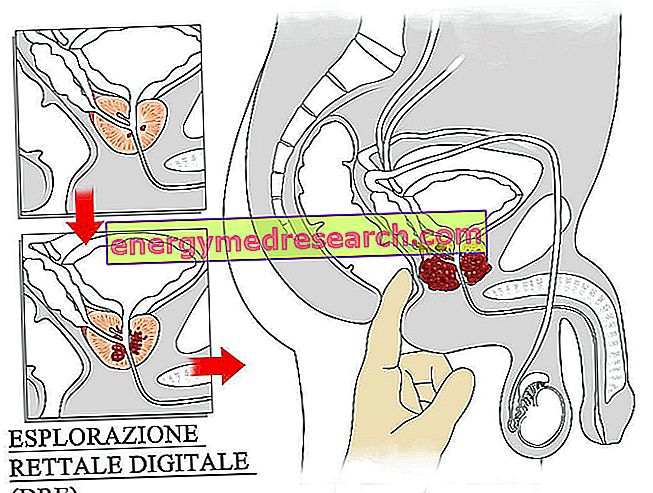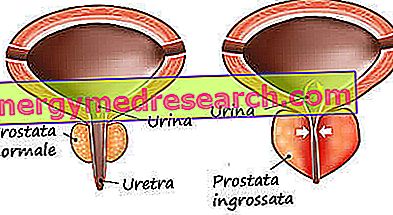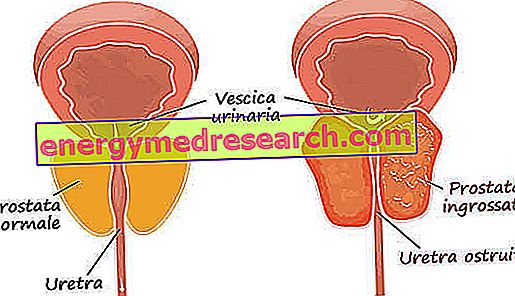Men in active surveillance for prostate cancer must undergo periodic visits, which are used to assess the progression of the disease and to identify any deterioration in time. During an active surveillance visit, the diagnostic evaluation tests, which the doctor can use, are: the PSA quantification test, digital rectal exploration (DRE), prostate biopsy and / or MRI
Category prostate health
Generality Ultrasound of the prostate is a diagnostic test aimed at the indirect vision of this gland, which enriches the seminal fluid of important components. For this purpose a metallic probe is typically used inserted in the rectum of the patient, after adequate lubrication; the device then emits high frequency sound waves, which are variously reflected by the surrounding tissues
Generality Digital rectal exploration of the prostate consists of palpation of the prostatic surface through the introduction of the gloved index finger in the patient's anus. This operation is carried out by a doctor specializing in urology and is essential for the diagnostic assessment of prostate cancer
Generality Inflammation of the prostate is an exclusively male problem and quite widespread, so that statistics in hand, affects 8.2% of men on at least one occasion in a lifetime. It should be remembered that the prostate is the chestnut-shaped organ, located under the bladder, which contributes significantly to the formation of the sperm
Generality Benign prostatic hyperplasia is a disease characterized by an enlargement (hyperplasia or hypertrophy) of the prostate - more specifically epithelial and stromal prostatic cells - that leads to the formation of nodules in the periurethral region of the prostate. When these nodules are large enough, they compress the urethral canal, causing partial obstruction of the same, thereby interfering with normal urinary flow
Generality Among the pathologies affecting the prostate, the most common is certainly benign prostatic hypertrophy or adenoma of the prostate. This happens especially after 50-60 years. As the years go by, in fact, the central part of the prostate tends to swell up to even exceed 2-3 times the measures considered normal
Generality Prostatitis is the inflammation of the prostate gland, that is the purely male organ, shaped like a chestnut, located just below the bladder and having a decisive role in the formation of the sperm. There are 4 types of prostatitis: acute prostatitis of bacterial origin (or type I prostatitis), chronic prostatitis of bacterial origin (or type II prostatitis), chronic non-bacterial prostatitis (or type III prostatitis) asymptomatic prostatitis (or type IV prostatitis)
Generality PSA - acronym of Prostate Specific Antigen , Italianized in Prostate Specific Antigen - is a protein synthesized by prostate cells. Small concentrations of prostate antigen are normally present in the serum of all men and can be assessed by a simple blood test. What's this PSA is a quantifiable protein in blood, produced exclusively by the prostate
Generality TURP , or transurethral resection of the prostate , is the surgical procedure whereby the prostate is partially removed in men with benign prostatic hypertrophy and associated urinary problems. It requires special preparation, to which the patient is required to adhere scrupulously to the success of the procedure
Related articles: Prostate cancer Definition Prostate cancer is one of the most common types of cancer in humans and becomes more common as we age. Generally the tumor progresses very slowly and in the early stages of its development remains confined to the prostate. For this reason the initial symptomatology is very scarce, non-specific and similar to that of benign prostatic hypertrophy, to which it is often accompanied
Related articles: Beningna prostatic hypertrophy Definition Benign prostatic hypertrophy (or hyperplasia) (IBP) is the increase in prostate volume, a chestnut-shaped gland responsible for producing an important liquid for male reproductive function. It is an almost physiological phenomenon in the male after 40-50 years











